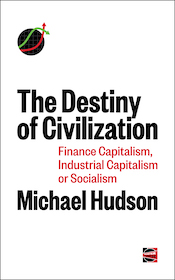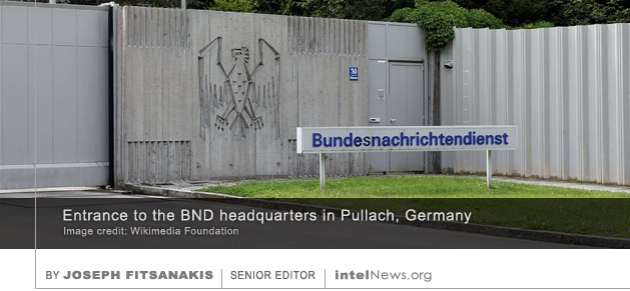As the saying goes, if you only have a hammer, every problem looks like a nail. The West has the North Atlantic Treaty Organization (NATO), a self-declared “defensive” military alliance – so any country that refuses its dictates must, by definition, be an offensive military threat.
That is part of the reason why NATO issued a new “strategic concept” document last week at its summit in Madrid, declaring for the first time that China poses a “systemic challenge” to the alliance, alongside a primary “threat” from Russia.
Beijing views this new designation as a decisive step by NATO on the path to pronouncing it a “threat” too – echoing the alliance’s escalatory approach towards Moscow over the past decade. In its previous mission statement, issued in 2010, NATO advocated “a true strategic partnership” with Russia.
According to a report in the New York Times, China would have found itself openly classed as a “threat” last week had it not been for Germany and France. They insisted that the more hostile terminology be watered down so as to avoid harming their trade and technology links with China.
In response, Beijing accused NATO of “maliciously attacking and smearing” it, and warned that the alliance was “provoking confrontation.” Not unreasonably, Beijing believes NATO has strayed well out of its sphere of supposed “defensive” interest: the North Atlantic.
NATO was founded in the wake of the Second World War expressly as a bulwark against Soviet expansion into Western Europe. The ensuing Cold War was primarily a territorial and ideological battle for the future of Europe, with the ever-present mutual threat of nuclear annihilation.
So how, Beijing might justifiably wonder, does China – on the other side of the globe – fit into NATO’s historic “defensive” mission? How are Chinese troops or missiles now threatening Europe or the US in ways they weren’t before? How are Americans or Europeans suddenly under threat of military conquest from China?
Creating enemies
The current NATO logic reads something like this: Russia’s invasion of Ukraine in February is proof that the Kremlin has ambitions to recreate its former Soviet empire in Europe. China is growing its military power and has similar imperial designs towards the rival, breakaway state of Taiwan, as well as western Pacific islands. And because Beijing and Moscow are strengthening their strategic ties in the face of western opposition, NATO has to presume that their shared goal is to bring western civilization crashing down.
Or as last week’s NATO mission statement proclaimed: “The deepening strategic partnership between the People’s Republic of China and the Russian Federation and their mutually reinforcing attempts to undercut the rules-based international order run counter to our values and interests.”
But if anyone is subverting the “rules-based international order,” a standard the West regularly invokes but never defines, it looks to be NATO itself – or the US, as the hand that wields the NATO hammer.
That is certainly the way it looks to Beijing. In its response, China argued: “Thirty years after the end of the Cold War, [NATO] has not yet abandoned its thinking and practice of creating ‘enemies’ … It is NATO that is creating problems around the world.”
China has a point. A problem with bureaucracies – and NATO is the world’s largest military bureaucracy – is that they quickly develop an overriding institutional commitment to ensuring their permanent existence, if not expansion. Bureaucracies naturally become powerful lobbies for their own self-preservation, even when they have outlived their usefulness.
If there is no threat to “defend” against, then a threat must be manufactured. That can mean one of two things: either inventing an imaginary threat, or provoking the very threat the bureaucracy was designed to avert or thwart. Signs are that NATO – now embracing 30 countries – is doing both.
Remember that NATO should have dissolved itself after the fall of the Soviet Union in 1991. But three decades later, it is bigger and more resource-hungry than ever.
Against all advice, and in violation of its promises, NATO has refused to maintain a neutral “security buffer” between itself and Russia. Instead, it has been expanding right up to Russia’s borders, including creeping furtively into Ukraine, the gateway through which armies have historically invaded Russia.
Offensive alliance
Undoubtedly, Russia has proved itself a genuine threat to the territorial integrity of its neighbor Ukraine by conquering its eastern region – home to a large ethnic Russian community the Kremlin claims to be protecting. But even if we reject Russian President Vladimir Putin’s repeated assertion that Moscow has no larger ambitions, the Russian army’s substantial losses suggest it has scant hope of extending its military reach much further.
Even if Moscow were hoping to turn its attention next to Poland or the Baltic states, or NATO’s latest recruits of Sweden and Finland, such a move would clearly risk nuclear confrontation. This is perhaps why western audiences hear so much from their politicians and media about Putin being some kind of deranged megalomaniac.
The claim of a rampant, revived Russian imperialism appears not to be founded in any obvious reality. But it is a very effective way for NATO bureaucrats to justify enlarging their budgets and power, while the arms industries that feed off NATO and are embedded in western capitals substantially increase their profits.
The impression that this might have been NATO’s blueprint for handling Moscow is only underscored by the way it is now treating China, with even less justification. China has not recently invaded any sovereign territories, unlike the US and its allies, while the only territory it might threaten – Taiwan – is some 12,000 kilometers from the US mainland, and a similarly long distance from most of Europe.
The argument that the Russian army may defeat Ukraine and then turn its attention towards Poland and Finland at least accords with some kind of geographical possibility, however remote. But the idea that China may invade Taiwan and then direct its military might towards California and Italy is in the realms of preposterous delusion.
NATO’s new posture towards Beijing brings into question its whole characterization as a “defensive” alliance. It looks very much to be on the offensive.
Russian red lines
Notably, NATO invited to the summit for the first time four states from the Asia-Pacific region: Australia, Japan, New Zealand and South Korea.
The creation of a NATO-allied “Asia-Pacific Four” is doubtless intended to suggest to Beijing parallels with NATO’s gradual recruitment of eastern European states starting in the late 1990s, culminating in its more recent flirting with Ukraine and Georgia, long-standing red lines for Russia.
Ultimately, NATO’s courting of Russia’s neighbors led to attacks by Moscow first on Georgia and then on Ukraine, conveniently bolstering the “Russian threat” narrative. Might the intention behind similar advances to the “Asia-Pacific Four” be to provoke Beijing into a more aggressive military stance in its own region, in order to justify NATO expanding far beyond the North Atlantic, claiming the entire globe as its backyard?
There are already clear signs of that. In May, US President Joe Biden vowed that the US – and by implication NATO – would come to Taiwan’s aid militarily if it were attacked. Beijing regards Taiwan, some 200 kilometers off its coast, as Chinese territory.
Similarly, British Foreign Secretary Liz Truss called last week for NATO countries to ship advanced weapons to Taiwan, in the same way NATO has been arming Ukraine, to ensure the island has “the defense capability it needs.”
This echoes NATO’s narrative about its goals in Ukraine: that it is pumping weapons into Ukraine to “defend” the rest of Europe. Now, NATO is casting itself as the guardian of the Asia-Pacific region too.
‘Economic coercion’
But in truth, this is not just about competing military threats. There is an additional layer of western self-interest, concealed behind claims of a “defensive” alliance.
Days before the NATO summit, the G7, a group of the seven leading industrialized nations that form the core of NATO, announced their intention to raise $600bn to invest in developing countries.
This move wasn’t driven by altruism. The West has been deeply worried by Beijing’s growing influence on the world stage through its trillion-dollar Belt and Road Initiative, announced in 2013.
China is being aggressive, but so far only in exercising soft power. In the coming decades, it plans to invest in the infrastructure of dozens of developing states. More than 140 countries have so far signed up to the initiative.
China’s aim is to make itself the hub of a global network of new infrastructure projects – from highways and ports to advanced telecommunications – to strengthen its economic trade connections to Africa, the Middle East, Russia and Europe.
If it succeeds, China will stamp its economic dominance on the globe – and that is what really worries the West, particularly the US and its NATO military bureaucracy. They are labeling this “economic coercion.”
This week, the heads of the FBI and MI5 – the US and UK’s domestic intelligence services – held an unprecedented joint news conference in London to warn that China was the “biggest long-term threat to our economic and national security.” Underscoring western priorities, they added that any attack on Taiwan would “represent one of the most horrific business disruptions the world has ever seen.”
Unilateral aggression
Back in the Cold War era, Washington was not just, or even primarily, worried about a Soviet military invasion. The nuclear doctrine of mutually assured destruction meant neither had an interest in direct confrontation.
Instead, each treated developing nations as pawns in an economic war over resources to be plundered and markets to be controlled. Each side tried to expand its so-called “sphere of influence” over other states and secure a larger slice of the planet’s wealth, in order to fuel its domestic economy and expand its military industries.
The West’s rhetoric about the Cold War emphasized an ideological battle between western freedoms and Soviet authoritarianism. But whatever significance one attributes to that rhetorical fight, the more important battle for each side was proving to other states the superiority of the economic model that grew out of its ideology.
In the early Cold War years, it should be recalled, communist parties were front-runners to win elections in several European states – something that was starkly evident to the drafters of the NATO treaty.
The US invested so heavily in weapons – today, its military budget exceeds the combined spending of the next nine countries – precisely to strong-arm poorer nations into its camp, and punish those that refused. That task was made easier after the fall of the Soviet Union. In a unipolar world, Washington got to define who would be treated as a friend, and on what terms, and who a foe.
NATO chiefly served as an alibi for US aggression, adding a veneer of multilateral legitimacy to its largely unilateral militarism.
Debt slavery
In reality, the “rules-based international order” comprises a set of US-controlled economic institutions, such as the World Bank and the International Monetary Fund, that dictate oppressive terms to increasingly resentful poor countries – often the West’s former colonies – in desperate need of investment. Most have ended up in permanent debt slavery.
China is offering them an alternative, and in the process it threatens to gradually erode US economic dominance. Russia’s apparent ability to survive the West’s economic sanctions, while those sanctions rebound on western economies, underscores the tenuousness of Washington’s economic primacy.
More generally, Washington is losing its grip on the global order. The rival BRICS group – of Brazil, Russia, India, China and South Africa – is preparing to expand by including Iran and Argentina in its power bloc. And both Russia and China, forced into deeper alliance by NATO hostility, have been seeking to overturn the international trading system by decoupling it from the US dollar, the central pillar of Washington’s hegemonic status.
The recently released “NATO 2030” document stresses the importance of NATO remaining “ready, strong and united for a new era of increased global competition.” Last week’s strategic vision listed China’s sins as seeking “to control key technological and industrial sectors, critical infrastructure, and strategic materials and supply chains.” It added that China “uses its economic leverage to create strategic dependencies and enhance its influence,” as though this was not exactly what the US has been doing for decades.
Washington’s greatest fear is that, as its economic muscle atrophies, Europe’s vital trading links with China and Russia will see its economic interests – and eventually its ideological loyalties – shift eastwards, rather than stay firmly in the western camp.
The question is: how far is the US willing to go to stop that? So far, it looks only too ready to drag NATO into a military sequel to the Cold War – and risk pushing the world to the brink of nuclear annihilation.
Jonathan Cook won the Martha Gellhorn Special Prize for Journalism. His latest books are Israel and the Clash of Civilizations: Iraq, Iran and the Plan to Remake the Middle East (Pluto Press) and Disappearing Palestine: Israel’s Experiments in Human Despair (Zed Books). His website is www.jonathan-cook.net. This originally appeared in the Middle East Eye.




 MORE THAN HALF OF all terrorist groups fail within a year, while 95 percent of them are extinct within a decade. Yet al-Shabaab, Somalia’s al-Qaeda-affiliated terrorist outfit, has been projecting strength in the Horn of Africa for over 15 years, despite having faced much stronger opponents. Today, with an operational presence in both Somalia and Kenya, the group maintains a force of between 5,000 and 10,000 full-time fighters. Pointing to its longevity, some observers view it as the most successful terrorist group of the 21st century.
MORE THAN HALF OF all terrorist groups fail within a year, while 95 percent of them are extinct within a decade. Yet al-Shabaab, Somalia’s al-Qaeda-affiliated terrorist outfit, has been projecting strength in the Horn of Africa for over 15 years, despite having faced much stronger opponents. Today, with an operational presence in both Somalia and Kenya, the group maintains a force of between 5,000 and 10,000 full-time fighters. Pointing to its longevity, some observers view it as the most successful terrorist group of the 21st century. neutralizing government spies”), Nor kheyre says.
neutralizing government spies”), Nor kheyre says./cloudfront-ap-southeast-2.images.arcpublishing.com/nzme/IOCQZY4UBYMDZHRNHCPQOOTRQU.jpg)